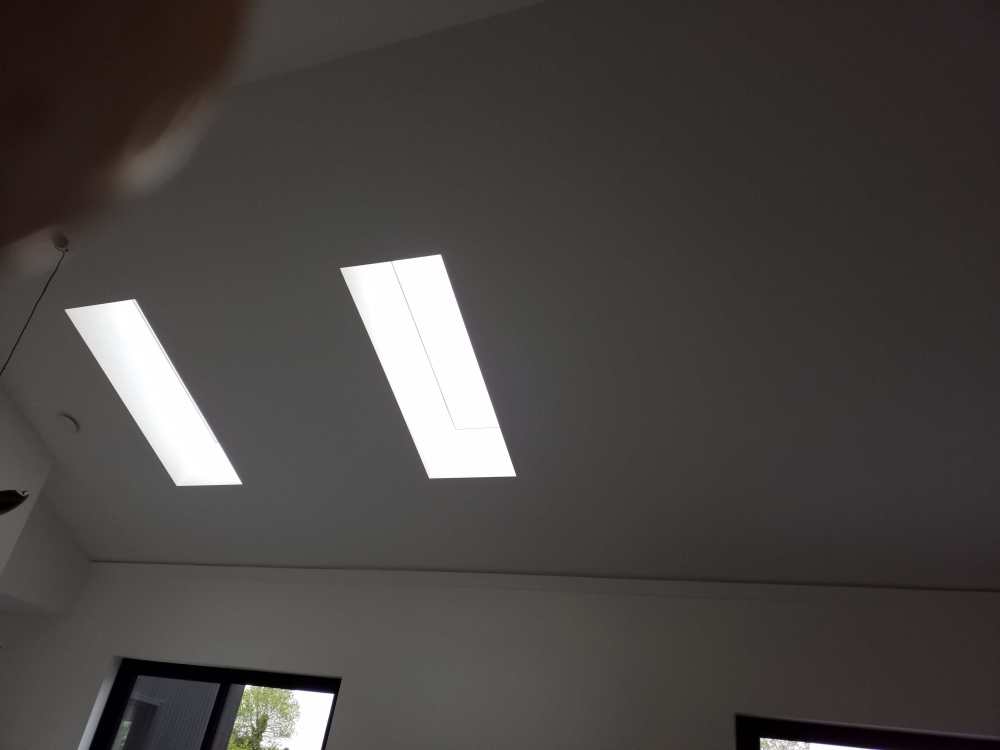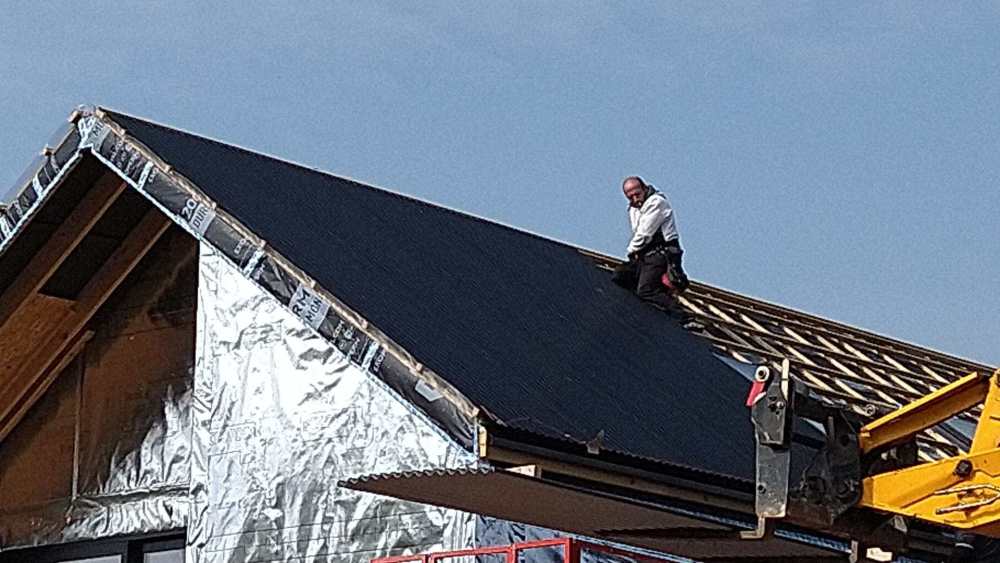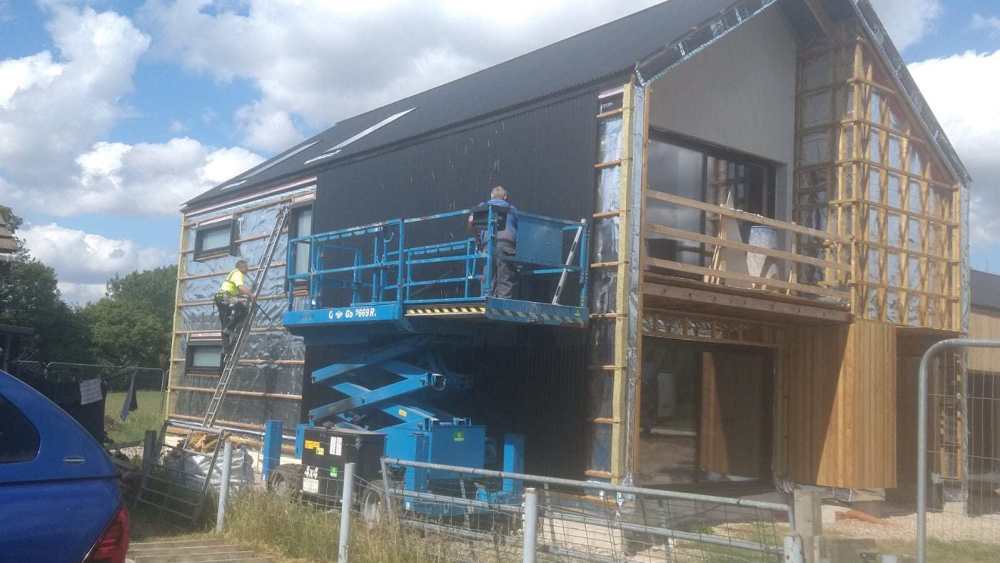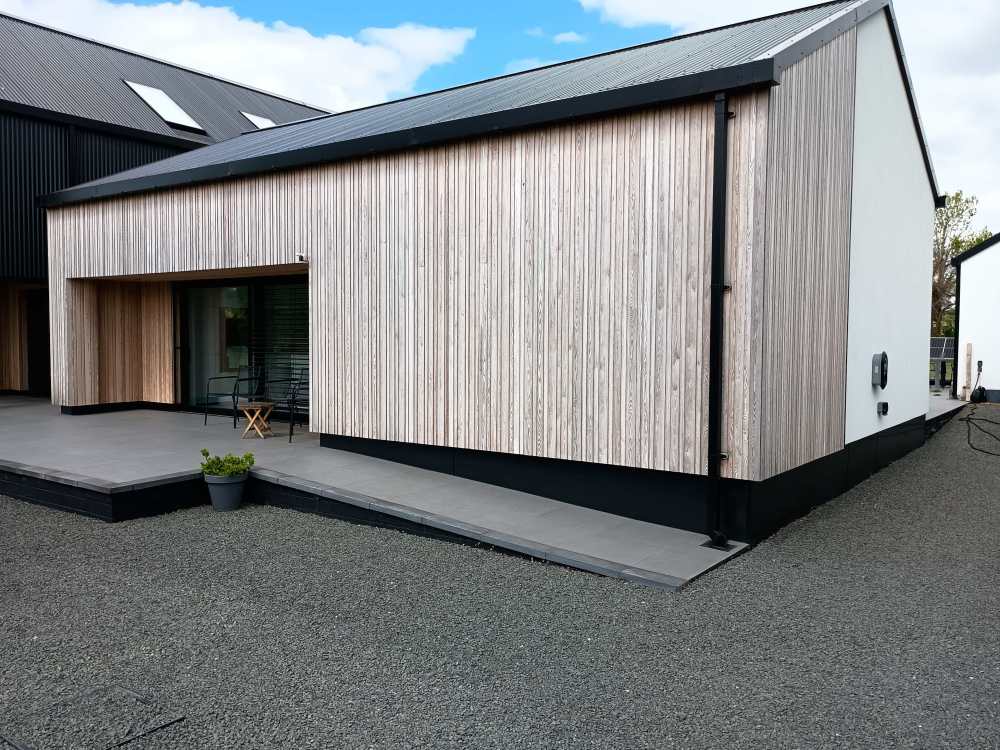
Bramco
Members-
Posts
661 -
Joined
-
Last visited
-
Days Won
1
Bramco last won the day on June 26 2021
Bramco had the most liked content!
Personal Information
-
Location
South Notts.
Recent Profile Visitors
The recent visitors block is disabled and is not being shown to other users.
Bramco's Achievements

Regular Member (4/5)
201
Reputation
-
Timber Cladding, Zinc Guttering, Brise Soleil and External blinds
Bramco commented on Thorfun's blog entry in West Sussex Forever Home
I'm pretty sure we have the same blinds and there's no flapping. They are much more robust than internal venetians. It's blowing maybe force 4 or 5 here at the moment and there's no movement. You can connect a wind sensor that will retract the blinds when it hits gale force 7 or whatever - we've turned ours off though, so the blinds have managed everything the weather has thrown at them for the last 3 years. -
Talk to Hallmark Blinds - I can't remember what ours cost but it wasn't prohibitive. And you don't need anything fancy for the 'cassette' that the blinds park into when up. All you need is a properly sized gap behind the cladding, so that the blinds can be fitted into the gap.
-
+1 for that - we also have external blinds on the south facing windows and no curtains. Make sure you build in cassettes for them to go up into. We also have overhangs on the ground floor windows but with the blinds in their horizontal position, we find that they let in the sun from the autumn through to spring which is when you want the solar gain and for the summer months, with the sun higher, they don't let any sun, so no solar gain. You can see this on our architects web site -> https://lhc.net/projects/ashcroft-creating-a-low-energy-family-home/. In this photo, the blinds on the 1st floor bedroom are up, the blinds on the ground floor are in their horizontal setting.
-
Just out of interest - how much does a bore hole typically cost? And I know it depends on depth, what the geology is etc. but is it hundreds, thousands or ten's of thousands? Or can anyone on this thread that has paid for one say how much theirs cost?
-
We set the heating pump on cooling last year but in the height of the summer. At this time of year though, the roof lights and patio sliding doors give enough draght to keep things ok. Having said that, when we used cooling it was very effective. Cool slab underfoot in the morning.
-
Corrugated roof material - recommendations?
Bramco replied to Great_scot_selfbuild's topic in Roofing, Tiling & Slating
@Great_scot_selfbuild See the attached photo from inside. The Roofmaker roof lights have an internal lip that the plasterboard fits into, so it's a very clean look. We haven't got any blinds. The roof lights come with remotes but can also be hard wired to momentary switches for up and down. I think they've changed the controllers now. Ours are hefty black boxes, I think the new ones are integrated into their switches. They also do rain sensors. We only fitted one and ganged it to all of the roof lights. We also have one momentary switch in the hall which we can use to put all the roof lights down. Again, this is ganged to all of them. -
Corrugated roof material - recommendations?
Bramco replied to Great_scot_selfbuild's topic in Roofing, Tiling & Slating
@Great_scot_selfbuild Not sure if you were planning on cladding, or the roof as well - if you are doing the roof and also rooflights, then look at the roofmaker rooflights. They do triple glazed etc and are motorized to lift up and down. For us, the great thing about the roofmaker roofights was that they were just a flat glass surface outside - they are also very neat inside. We've always hated the bumps at the top of velux and similar rooflights. You can see the 'look' on the second image above. -
Not sure where they get the potassium from... From the Sioox website -> https://sioox.com/pro/gb/articles/patented-silicon-formula/ 'The use of silicon technology to protect and preserve wood was already developed in nineteenth-century Germany. We have refined this technology and created a patented silicon formula for a unique wood protection product – that contains no toxins. Our silicon-based wood protection products are based on mechanical principles. Simply put, the product’s silicon crystals penetrate and strengthen the wood, while forming a physical barrier.'
-
Corrugated roof material - recommendations?
Bramco replied to Great_scot_selfbuild's topic in Roofing, Tiling & Slating
Here's the spec for the steel... Roofing&Cladding_N14-3Sinus.pdf CoatingsPages_GreencoatCrownBT.pdf Data_sheet__GreenCoat_Pro_BT_2021-03-22.pdf -
Maybe what we need is a forum topic for sharing specs and images of cladding, so that folks can easily see what the differences are.
-
@Roundtuit - you're right! Old age creaping in... I remember now! Thanks for reminding me. Need to wash the windows more often and remember to spray the underhangs...
-
Corrugated roof material - recommendations?
Bramco replied to Great_scot_selfbuild's topic in Roofing, Tiling & Slating
-
You can see under the overhang that it is still in the process of greying out - it needs light for the sioox process to work.
-
We have larch but didn't want it grey. So had it treated with Sioox by Russwood our supplier. 3 years in and it just looks bleached...
-
Corrugated roof material - recommendations?
Bramco replied to Great_scot_selfbuild's topic in Roofing, Tiling & Slating
@Great_scot_selfbuild We have black corrugated roofs and walls to the 2 storey section of the house - images here -> https://lhc.net/projects/ashcroft-creating-a-low-energy-family-home/ Our son was the architect and specced the tin. From memory it has at least a 45 year guarantee - I think it was Firth steels. We used a company in Leominster to do the actual supply - Thomas Panels and Profiles. They suggested a contractor to do the actual build but we sacked him off half way through and our main contractor finished things off. fastenings were EJOT. I can get more detail if you need it. We found it hard to find examples to go and see in real life - there's probably more around now. You're a long way away in Surrey but you're always welcome if you are up our way to have a look at ours.






